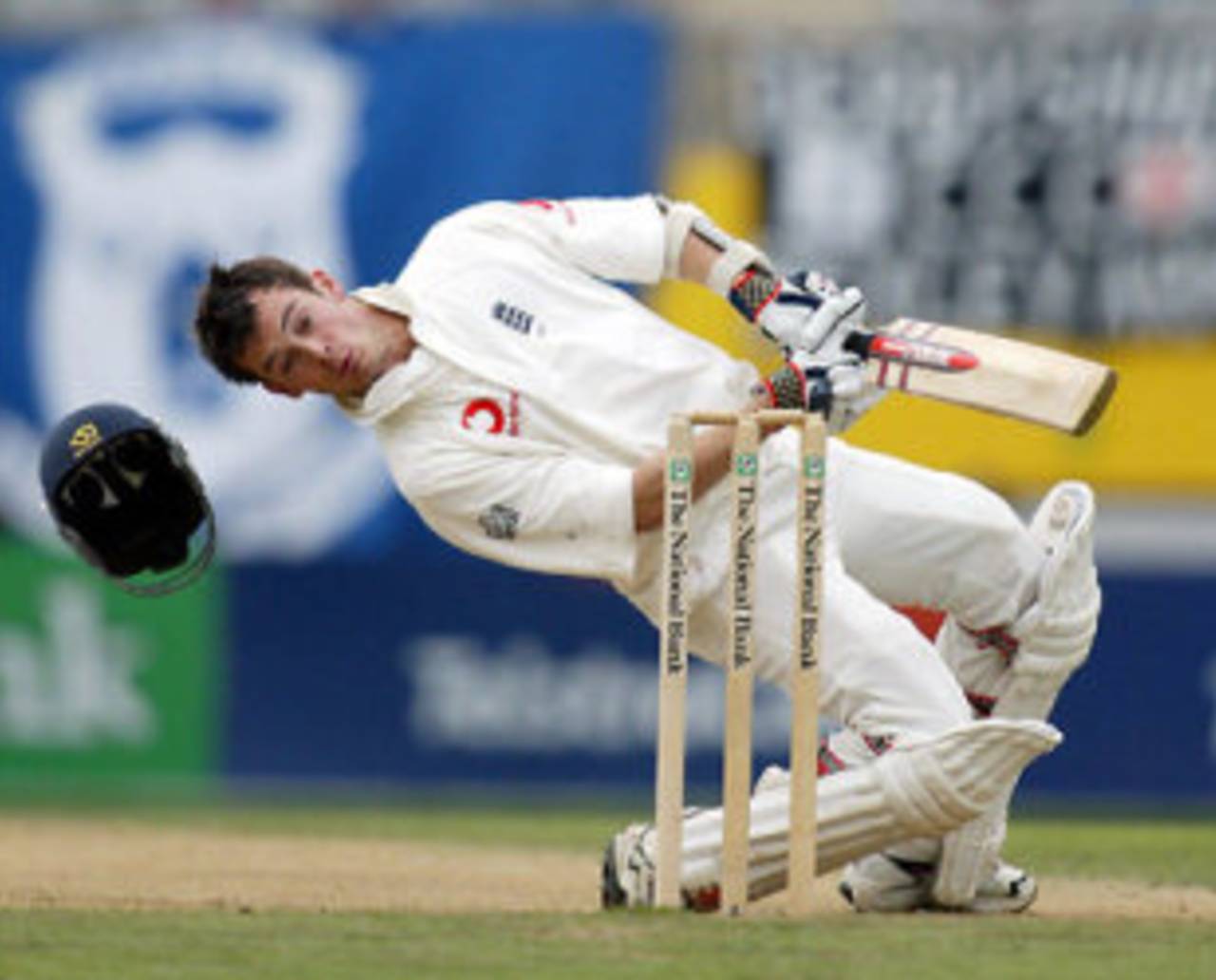The helmet
A piece of cricket equipment that affected batting techniques - and not for the better
Dileep Premachandran
19-Sep-2010

Now an essential part of a batsman's kit • Andrew Cornaga/Photosport
1977
England's Patsy Hendren famously walked out to bat at Lord's in 1933 wearing a reinforced cap stitched together by his wife - a ridiculous sartorial statement that might have impressed Sherlock Holmes. But since it was the season after Bodyline, he needn't have bothered.
Intimidatory bowling went into a shell until the 1950s, when the South Africans (Neil Adcock and Peter Heine) and West Indians (mainly Charlie Griffith) started to target batsmen. By the mid 1970s, batsmanship had become a risky occupation, with Dennis Lillee, Jeff Thomson and the West Indian quartet all on the prowl. Faced with the prospect of reconstructive surgery, batsmen opted for protection.
Graham Yallop was the pioneer in Tests, walking out to bat in Bridgetown in 1977-78 wearing a big white motorcycling helmet. Around the same time, Dennis Amiss went the same route in World Series Cricket. The game would never be the same again.
Batsmen were protected and felt it less necessary to master the hook as a counter to short bowling. And, in response to the batsman's insulation, bowling became steadily more intimidatory till laws were passed to control it.
Dileep Premachandran is an associate editor at Cricinfo. This article was first published in Wisden Asia Cricket magazine in 2003